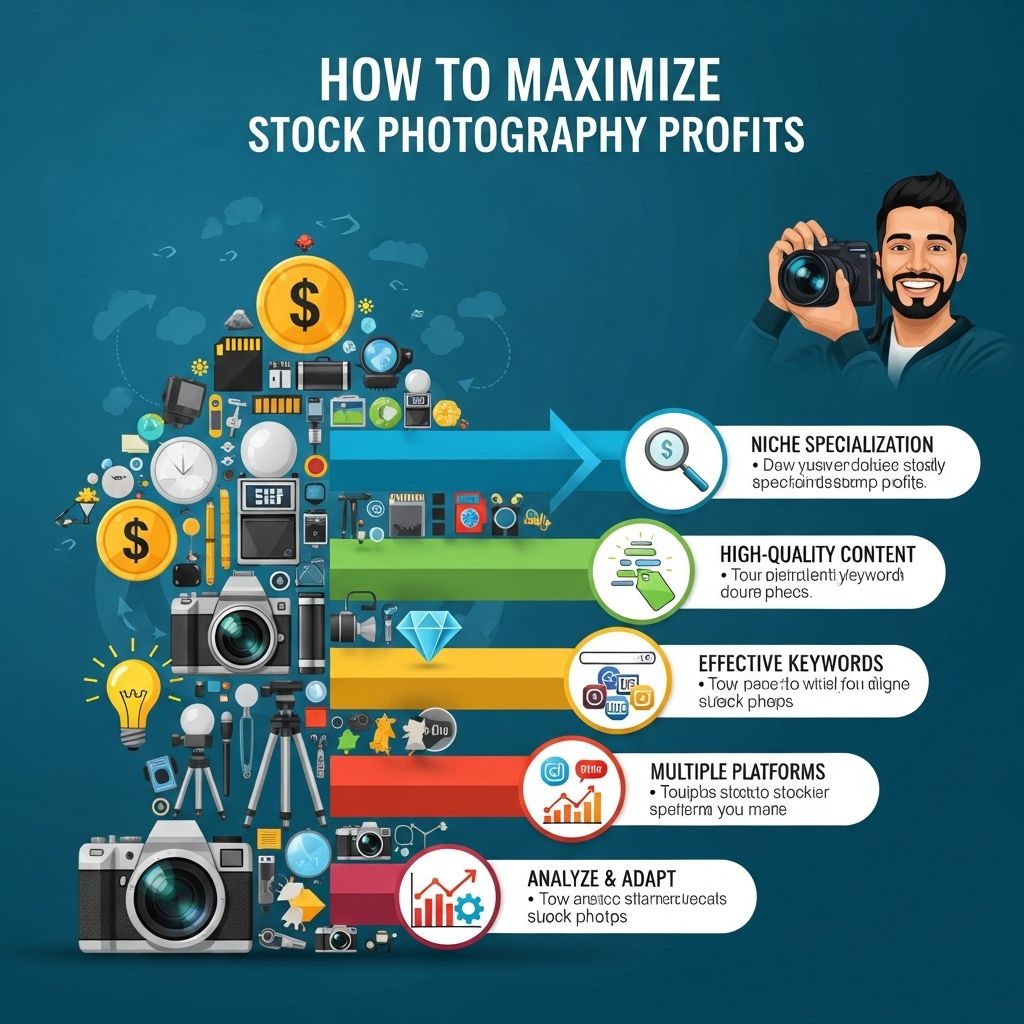Stock photography has become an essential revenue stream for many photographers and creatives alike. With the rise of digital platforms and the increasing demand for high-quality images, understanding how to maximize profits from stock photography is crucial. This article delves into strategies that can enhance your stock photography business, from selecting the right niches to effective marketing techniques.
Understanding the Stock Photography Market
The stock photography market is vast, with millions of images available for licensing. It’s important to grasp the fundamentals of how this market operates:
- Licensing Models: Familiarize yourself with the different licensing options—royalty-free, rights-managed, and editorial use.
- Trends and Demands: Keep abreast of market trends and popular themes that buyers are looking for.
- Marketplaces: Explore various stock photography platforms like Shutterstock, Adobe Stock, and Getty Images, and understand their payment structures.
Choosing Your Niche Wisely
Finding the right niche can significantly impact your stock photography profits. Here’s how to go about it:
Identifying Profitable Niches
Some niches tend to be more profitable due to higher demand. Consider focusing on:
- Healthy Lifestyle and Wellness
- Remote Work and Technology
- Travel and Adventure
- Home and Lifestyle
- Business and Finance
Researching Competition
Analyze existing stock photography within your chosen niche to discover gaps or areas that are underserved. Utilize tools like Google Trends and stock websites’ search functions to assess what is trending.
Creating High-Quality Content
The quality of your photography is paramount. To stand out in the crowded market, consider the following:
Technical Quality
Your images should be technically sound. Pay attention to:
- Resolution: Ensure your images are high resolution (at least 300 DPI).
- Lighting: Use natural light where possible, or invest in quality lighting equipment.
- Composition: Utilize the rule of thirds, leading lines, and other compositional techniques.
Post-Processing
Editing plays a crucial role in enhancing the visual appeal of your photographs. Use software like Adobe Lightroom and Photoshop to:
- Adjust exposure, contrast, and colors.
- Remove distractions through cropping and retouching.
Optimizing Your Portfolio for Search
To maximize visibility, it is essential to optimize your portfolio. Here’s how:
Keyword Research
Use relevant keywords when tagging your images. Tools like Google Keyword Planner can help you find popular keywords related to your images.
Writing Effective Descriptions
Each image should have a unique description that accurately represents its content. This helps in improving the image’s searchability and aids buyers in making informed decisions.
Marketing Your Stock Photography
Effective marketing strategies can significantly impact your sales. Here are some methods to consider:
Social Media Promotion
Utilize platforms like Instagram and Pinterest to showcase your work. Tips for social media marketing include:
- Post consistently to keep your audience engaged.
- Use relevant hashtags to reach a wider audience.
- Engage with followers and other photographers.
Building a Personal Website
A personal website can serve as a portfolio and a means to sell images directly. Ensure your website includes:
- A clean and attractive design.
- An easy-to-navigate gallery.
- Contact information for potential clients.
Analyzing Your Performance
Regular analysis of your sales and performance metrics is crucial for improving your stock photography business. Focus on:
Tracking Sales Data
Most stock platforms provide analytics tools to track your sales. Look for:
- Which images are selling the best.
- Trends in buyer behavior.
Adjusting Your Strategy
Based on your performance analysis, be willing to adapt your strategies. This may include:
- Shifting focus to more profitable niches.
- Enhancing the quality of your top-selling images.
Exploring Additional Revenue Streams
In addition to selling stock photos, consider diversifying your income sources:
Print Sales
Offer prints of your photography through platforms like Etsy or your own website.
Workshops and Tutorials
Share your expertise by hosting photography workshops or creating educational content that others can purchase.
Conclusion
Maximizing profits from stock photography requires a combination of quality content creation, strategic marketing, and ongoing analysis. By focusing on the right niche, enhancing your technical skills, optimizing your portfolio, and exploring additional revenue streams, you can build a successful stock photography business that generates substantial income. The journey may take time, but with dedication and informed strategies, it is certainly achievable.
FAQ
What are the best platforms to sell stock photography?
The best platforms to sell stock photography include Shutterstock, Adobe Stock, iStock, and Getty Images, as they have a large customer base and provide various tools for photographers.
How can I optimize my stock photos for search visibility?
To optimize your stock photos for search visibility, use relevant keywords in your titles, descriptions, and tags. Research trending topics and popular search terms to increase your chances of being found.
What type of images sell best in stock photography?
Images that sell best in stock photography include lifestyle images, business-related visuals, nature and landscape photography, and diverse representations of people engaging in various activities.
How important is image quality in stock photography?
Image quality is crucial in stock photography; high-resolution, well-composed, and properly edited images attract more buyers and increase the chances of sales.
Should I focus on a niche for stock photography?
Yes, focusing on a niche can help you stand out in the crowded market of stock photography. Finding a specific area of expertise allows you to build a dedicated audience and cater to their needs.
How can I promote my stock photography effectively?
Promoting your stock photography can be done through social media marketing, blogging about your work, collaborating with influencers, and participating in photography forums to increase visibility and attract potential buyers.




